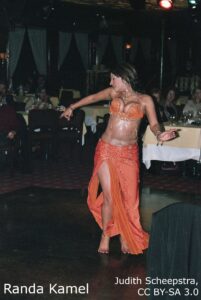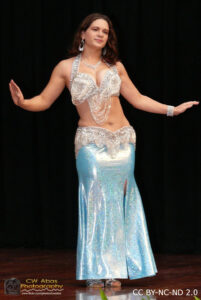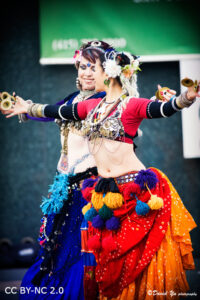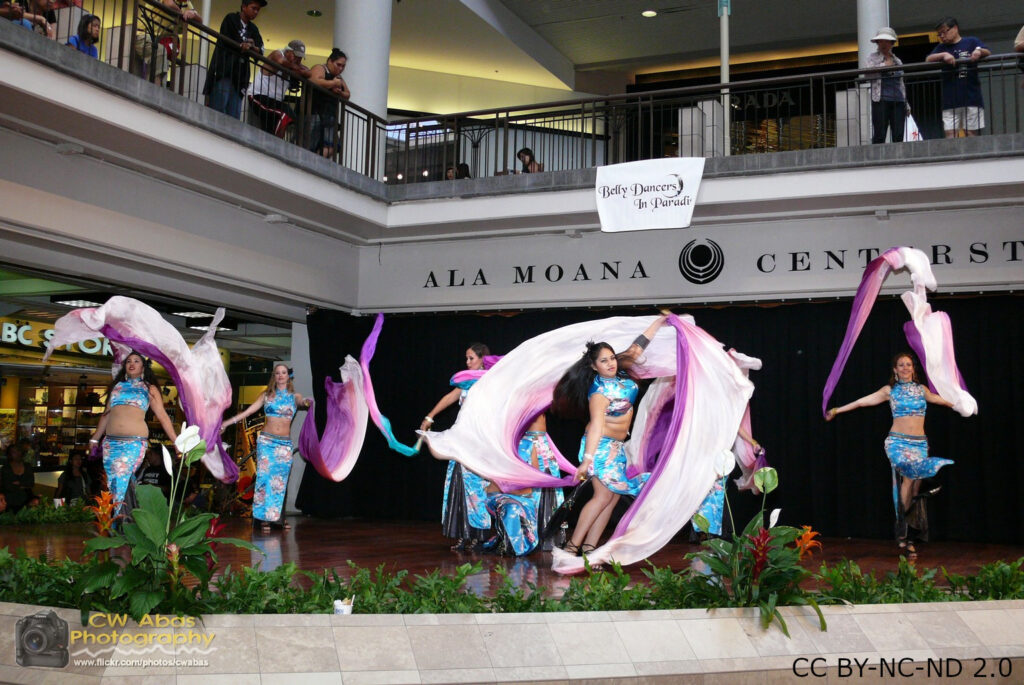In this post, I explore the key characteristics of belly dance across its different styles. I hope that this can help you as a student to choose which characteristics are important to you. And this can inform which styles of belly dance you would like to learn.
Defining Belly Dance
Belly dance is a dance form originating in the Middle East. It features isolation and articulation of the torso, chest, and hips. Belly dance movement originates from the torso. This is unlike many other familiar dance forms like ballet, which are primarily concerned with the movement of limbs through space. Broadly speaking, belly dance movements can be characterised within seven core movement families. These describe shapes you can draw with your chest and hips. They are lifts and drops, slides, shimmies, twists, circles, figure 8’s, and undulations (“The Seven Movements of Belly Dance” by Shemiran Ibrahim). A skilled belly dancer can isolate the chest from the hips or vice versa. They keep one part still while the other one moves. Or can even do one move with the hips and a completely different one with the chest.

But movement alone doesn’t make belly dance. Technique, as in well-executed movement, is one important puzzle-piece. But it’s not the full picture. Belly dance is an expressive dance concerned with the emotional interpretation of music through movement. (Britannica: “Expressive Dance”) So a dancer uses her technique to effectively transmit her feelings. Perfectly executed movements on their own without deeper intention are sterile and expressionless. This makes the expressiveness of the dance just as important as the technique.
Now we have a definition of belly dance covering the movements and the expressivity. What about the performance aspect? Belly dance as a ‘concert dance’ for an audience is typically performed in the Middle East by a female solo performer. (Wikipedia: “Concert Dance”) The dancer improvises to Middle Eastern music, often played by a live band. She entertains the audience to a range of musical styles, from well-loved classics to folklore. Some elements of a show may be set or choreographed. But in the main, improvisation, spontaneity, and audience interaction are typical in a Middle Eastern dance performance.
Belly Dance Styles Overview
From this Middle Eastern style of performance belly dance, belly dance has spread across the world and diversified into a range of styles. Some ‘global’ styles of belly dance still focus on solo improvised dance to Middle Eastern music. Others fuse group or solo choreography with Middle Eastern or Western-fusion music. Still others use group-improvisation techniques. Some feature Western-style theatrical storytelling performances. Some have a ‘sparkly’ aesthetic where performers wear beaded bras and skirts. Others have an ‘earthier’ feel with voluminous layered skirts, coins, and shells. In general, belly dance has evolved and fused with other art forms to become a transnational fusion (“Transnational Fusion Dance… An Open Letter to My Dance Community” by Donna Mejia). In my opinion, none of these styles are the ‘correct’ way to belly dance. But if you accept the premise that belly dance is all about expressing music through movement using isolation and articulation of the torso, chest, and hips, then they are all belly dance.




As a student of belly dance, ask yourself, what type of belly dance would I like to do? Do I like solo dancing, or performing in groups? Middle Eastern or fusion music? Improvisation or choreography? Let these preferences guide your choices for choosing a style that works for you. For more, check out my blog post introducing belly dance styles.
Resources
Farida Fahmy’s articles. See especially “Egyptian Dance Aesthetics for Bellydancers”. http://www.faridafahmy.com/articles.html

Thank you so much for your blog and articles which are excellently written and easy to understand. You have done an exceptional job of breaking down the movement categories and the information that you provided is so helpful and educational. Thank you!!